Beautiful horror
Halloween in the urban woods
Thursday a north wind blew in hard, stirring up the dust of our slowly desertifying landscape and turning big pieces of discarded packaging material from nearby industrial lots into Anthropocene tumbleweeds that rolled down the long lane until they got stuck at our fence, which marks a dividing line of sorts between city and the wild. The trees along that fence are mostly volunteers, retama that didn’t survive February’s big freeze, and as I worked that afternoon the dead branches I’d neglected to prune scratched at the fuselage of my trailer, wooden claws on aircraft aluminum. Just the kind of noise and shadow I used to scare my brother with monster stories when we were so little we still shared the same room. He’s a ghost now, the story of whose last corporeal moments I tried to piece together while cleaning up his place after the medical examiner left, able to glimpse the private truths of his life in a way that almost felt like a violation. Alex appreciated the power and importance of masks better than most, and the way the real meaning of the things you see will always elude you. Maybe that’s why I think of him on Halloween.
We never watched a lot of scary movies when we were kids, though we were weaned on camping stories of nearby axe murderers and urban legends of dangerous hitchhikers, back when there was a hitchhiker at every onramp. We grew up in the sort of pleasant domesticity that knew how to keep the dark things away from the dinner table, even when there were bats in the attic and bee hives in the walls. So I never really appreciated the allure of horror until I moved to the edge of the woods behind the factories, and started to experience little bits of it every day while walking the dogs. Small encounters with the remains of animal violence, usually in a way that makes you put the story together yourself. Like when the coyotes and vultures leave a spine the size of your own blocking the path you use to pass through their domain every day.
If you spend a dozen years walking empty lots and urban woods and trying to get freshly lost every time, you learn to move with enough quiet that you sometimes bump into the other creatures that live in those woods—coyotes and whitetails, hawks and owls, wild dogs and leprous armadillos. And once in a while you get to see the Marlin Perkins-worthy drama of the struggle between predator and prey under the stage light of the sun. A hawk grabbing a dove from midair between the power lines, an osprey snatching a fish from beneath the tollway bridge as the departing jumbo jet whines in the background, a water moccasin devouring a frog at the base of an abandoned gaging station. More often you see the evidence left in the morning of the things that happened in the night.
The forest is a boneyard, its floor ever-littered with what remains after the fangs and then the beaks and then the mandibles and then the germs get done recycling the life energy of another. Sometimes you’ll find an entire carcass, so fresh and intact you wonder how close by the killer still is. Decapitations are strangely common, even though they never make much sense. The urban river leaves behind many a water-bleached ghost, an animal that drowned someplace upstream, and morphed into some more fantastical creature in its float to the beach where you find it. Once in a while you’ll see an animal killed by our trash, like the big stag I once found garroted by a long strand of insulated wire hung between twin trunks of a young tree. And then there are the skulls, which hold a more powerful fascination, maybe because they tap into that same human instinct that compels us to make and wear masks.
I found this raccoon skull exactly as pictured, on a bench down in the swamp camp behind the old gravel pit. A reminder that the scarier thing in the urban woods is the other people who like to explore them. And a revelation that makes you wonder if you are all that less scary, collecting bones and feathers and your own memories of natural horror.
When I walk the urban woods I seek out animal encounters, but avoid human ones. Sometimes they sneak up on you anyway, like the jolt I got one dark morning in the driving rain when I came upon the wizardly silhouette of a dude in a broad-brimmed hat carrying a staff with which he led six big German shepherds. When you follow trails you have never walked before, you sometimes find they lead to well-hidden camps whose occupants don’t want visitors. Last year around this time I found a fellow bushwhacker loping through the swamp below the loop road, carrying a backpack of his own making, moving in the direction of nowhere. He didn’t see me, even though he was just twenty feet away, making me almost wonder if he was an apparition from some other frequency.
Three years ago we had an actual zombie come up out of the woods, climbing our back fence and then shambling through the tallgrass of our front yard on a Saturday afternoon so wacked out on K-2 that he didn’t even respond when nudged with a garden hoe. When I tried to talk to him, I realized he was a dead ringer for a guy I used to know, a stoner who hung out at our local coffee shop and kept skulls and bones on the dash of his old VW bus. I said his name, but still no response. The cops who showed up when the neighbors called as he moved on through their yard said you’re lucky he wasn’t one of the face-eaters like they had in Miami.
One Sunday morning, much longer ago, I was walking through the gnarled canopy of new trees that hug the northern bank of a little side channel below the bridge when I noticed feathers on the path. Feathers, and red splatter, and a trio of votive candles, remnant of the kind of ritual even the First Amendment would consider taboo.
And sometimes you find graves out in the urban woods. Usually of someone who drowned in the river or got run over by the side of the road. But just this week I was remembering how the site of what is now our daughter’s favorite playground in the park across the river was marked with a cross and plastic flowers memorializing a murder victim whose body had been dumped there. The cross is long gone now, and the juvenile energy of the playground has mostly banished the gothic linger, but you can’t help but wonder what spirits lurk in that ravine behind the last swingset.
You don’t need to go to Summerisle or the Hårga to find the folk horror. It’s all around you, hiding in plain sight in the middle of the contemporary American landscape.
I never really understand the literary power of horror until I did a few workshops with colleagues who wrote those kinds of stories, stories whose real charge you realized as you unpacked them came not from the devils and monsters and ghosts that populated them, but from a narrative that refused to be redemptive. And that in doing so, came much closer to telling the truth about how real life works, at least in this earthly realm where life eats life.
The urban forest teaches those lessons. It brings you closer to the world of fable, of all those stories that used imaginative fright to warn the children of yore to avoid the real and natural dangers of such places. It also lets you encounter your own ancestral predator, like when you see a deer leap across an empty lot that your dogs are too short to see above the weeds, and you suddenly understand the real reason you walk upright. To be predator instead of prey, the killer that uses tools and the thief that stole fire. That revelation of the primitive lurking within the literate self helps you appreciate how much of the roots of horror really lie in our fear of our own wildness, as our angelic self-conceptions wrestle with the appetites and excretions of the body, a struggle that comes through so strongly in the writings of the early Christians.
I think it was these revelations about the power of horror—first from the woods, and then from the way they changed how I read—that tracked me into exploring the power of dystopian narrative. In no small part because, exploring the involuntary parks that are the negative space of the city, you come to appreciate how the most intense horror is the millennia-long story of human dominion over the planet in all its unceasing brutality, a brutality modern life works hard to keep behind the set of our narcissistic stage. But even on Halloween, I can’t help but also see the kernels of hope. Not from the news of another nation-state climate summit, but from the accumulated experience of seeing how resilient nature is in the slivers of our domain where we let it do its thing. In horror we can find clues to how to rediscover the wild side of the self, which may be what it really takes to figure out how to rewild the planet.
Lawn wars and other news
Friday’s local paper here in Austin brought the Ballardian news of a man killed when the city code enforcement officers came out to forcibly mow his lawn. The showdown occurred in a neighborhood known as Circle C, where what once was ranch land and before that was grassland at the edge of the Hill Country is now Austin’s most stereotypical example of modestly prosperous cookie-cutter suburbia. A sad story that probably involves mental illness and a proclivity to violence on the part of the homeowner, but it’s disappointing that none of the coverage bothered to interrogate the legal standard and prevailing norms that enforce the ecologically unsound ornamental lawn as the only kind of yard that is “safe and sanitary.”
On the subject of the writings of early Christians, I’ve really been enjoying this series of conversations between Irina Dumitrescu and Mary Wellesley exploring the lives and voices of women in medieval literature for the London Review of Books podcast. The discussions focus on four key texts about Mary of Egypt, Julian of Norwich, Margery Kempe and the Wife of Bath, and each one is fascinating and illuminating.
Friday morning I got to spend the early morning exploring the sonic landscape of the river, accompanying sound artist Bill Fontana and curator Lynne Maphies as Bill works on an upcoming piece for the Blanton Museum here in Austin, the inaugural installation at a permanent sound-art space planned to be completed next year. We started out in the dark by an industrial site, a suitably creepy way to meet strangers on Halloween weekend. But as the sun came up, seeking faster water, we relocated to the spillway of Longhorn Dam, where what looked to be a hundred egrets and cormorants were gathered waiting for breakfast to swim out from the bottom of Lady Bird Lake. It was a gorgeous, authentically autumnal day, where each of us got a glimpse of how wild nature can persist in the heart of the city. I got to spend a chunk of the morning in the river, my first experience helping to handle a hydrophone. I later got a preview of the results, and a window into Bill’s process. I love field recordings, and after meeting Bill and hearing some of the local sites he has visited, I am really keen to experience the end result when it is installed. A reminder to open your ears, and maybe even close your eyes, when you are out for a walk.
Happy Halloween, and have a safe week.


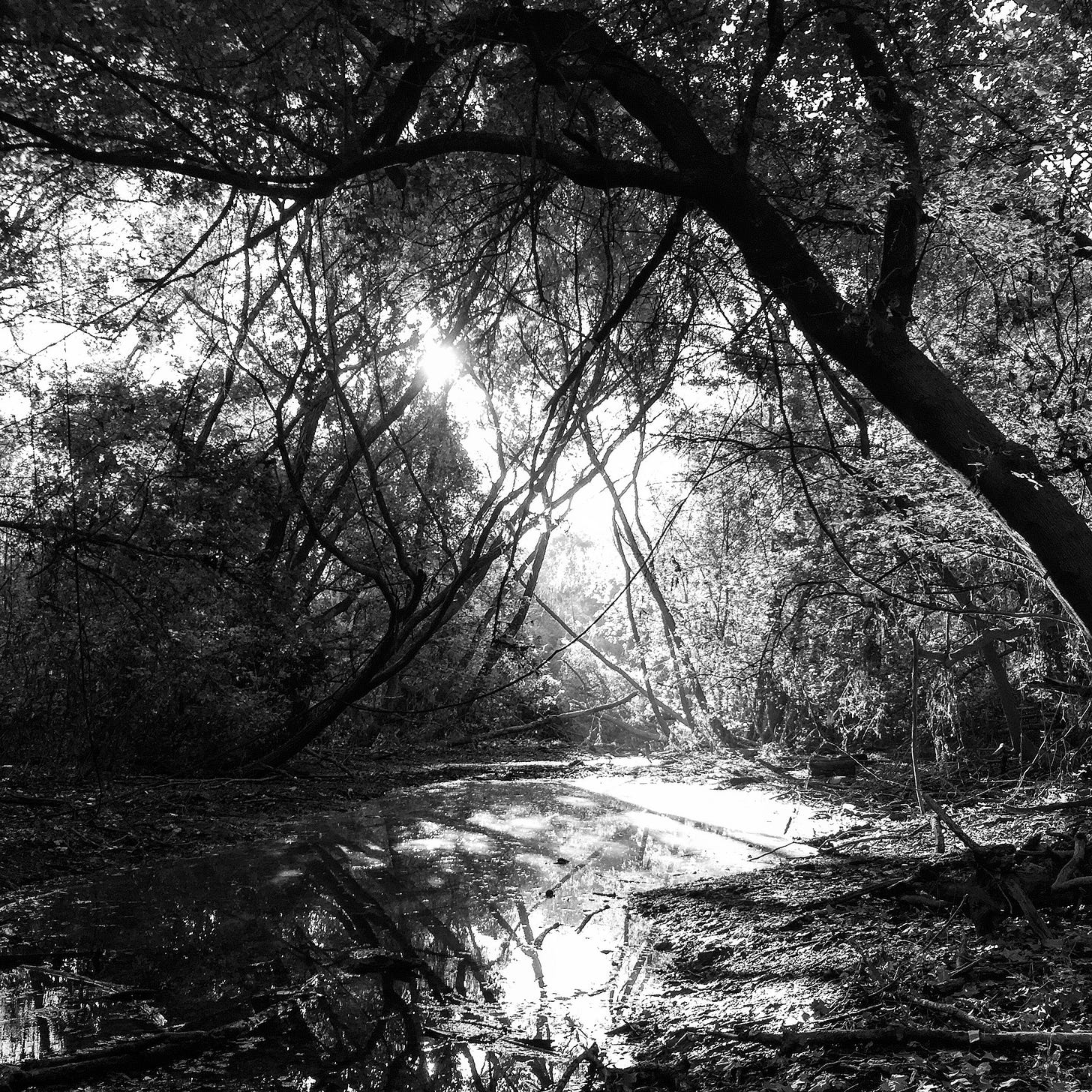

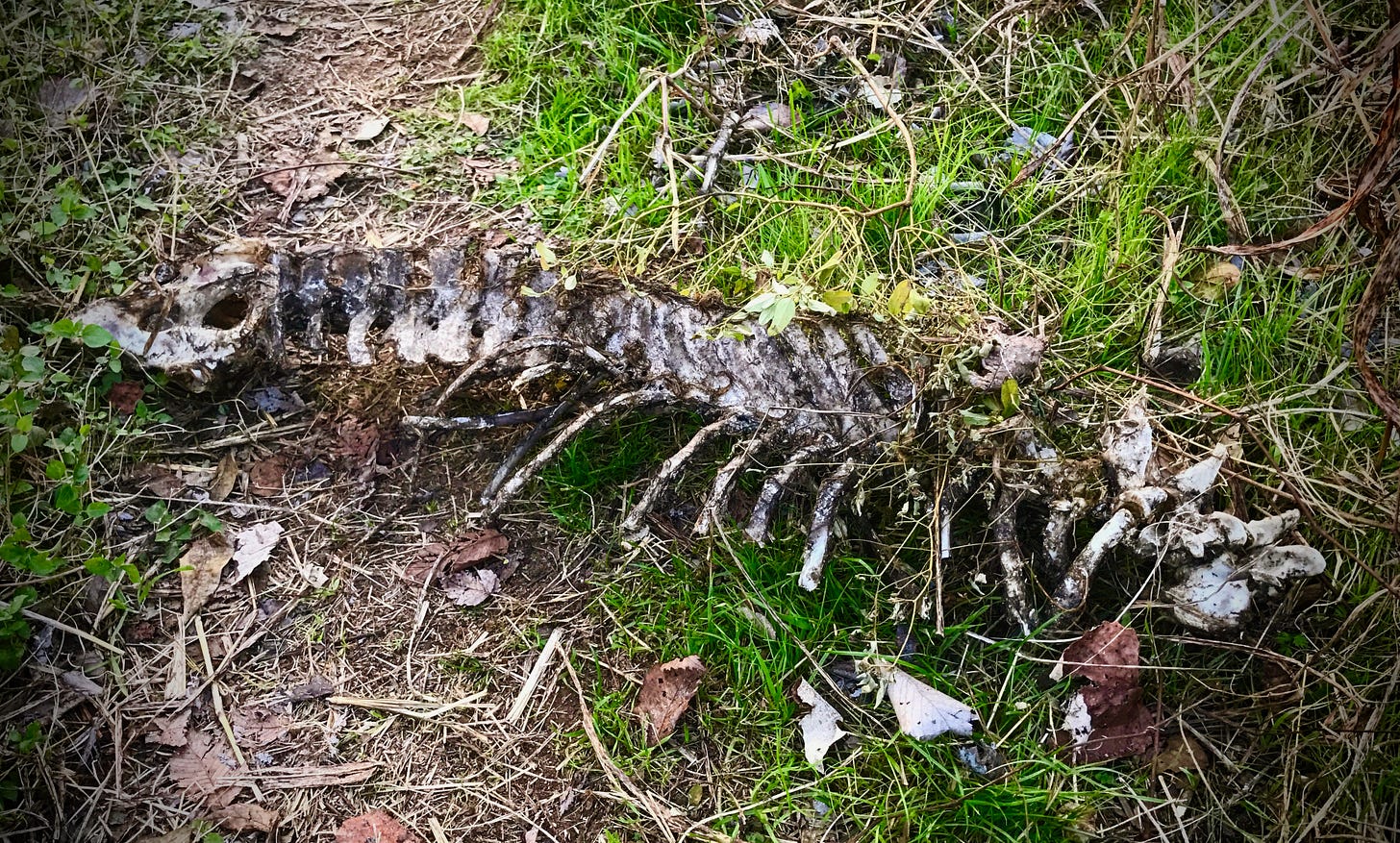
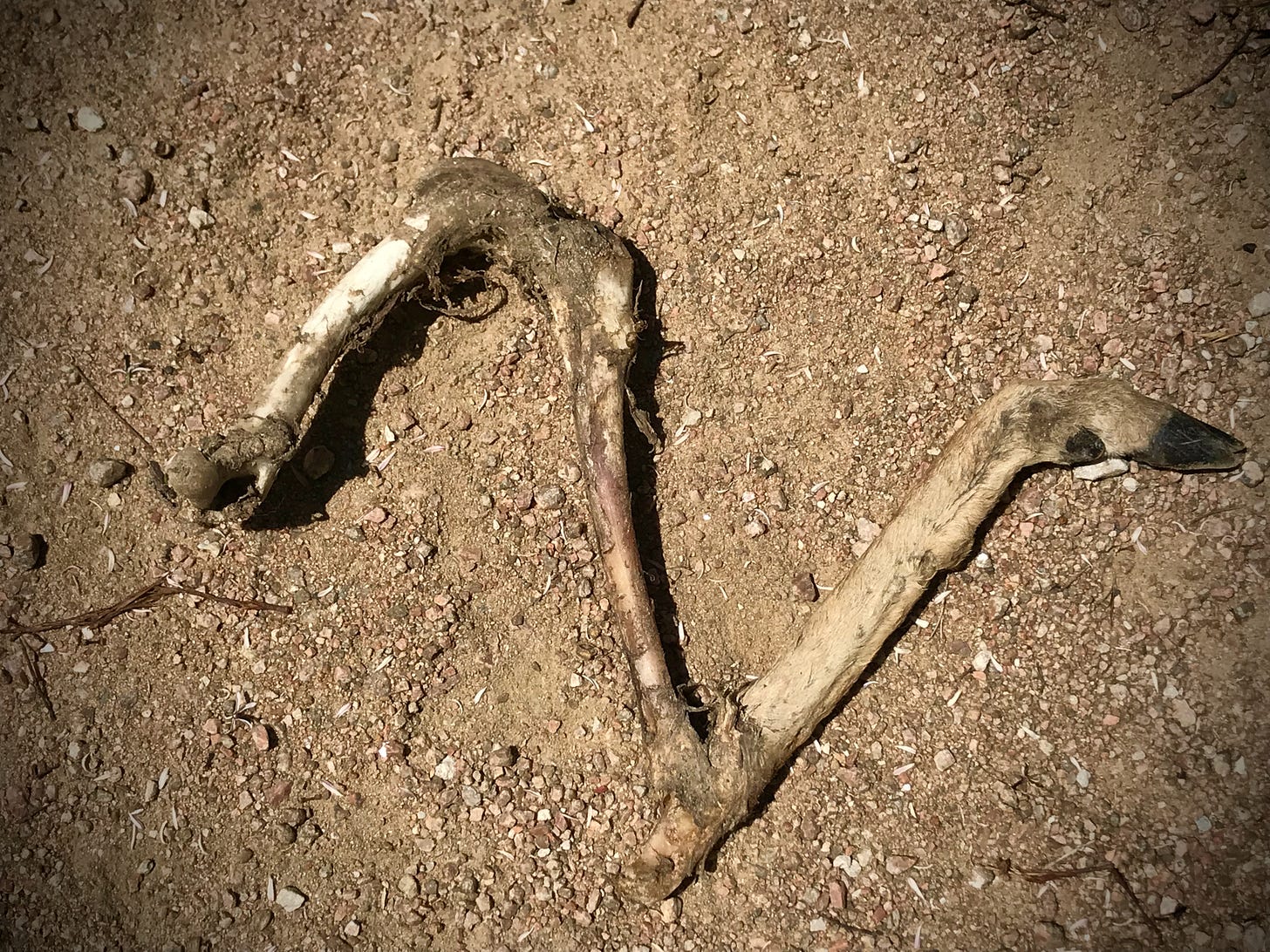
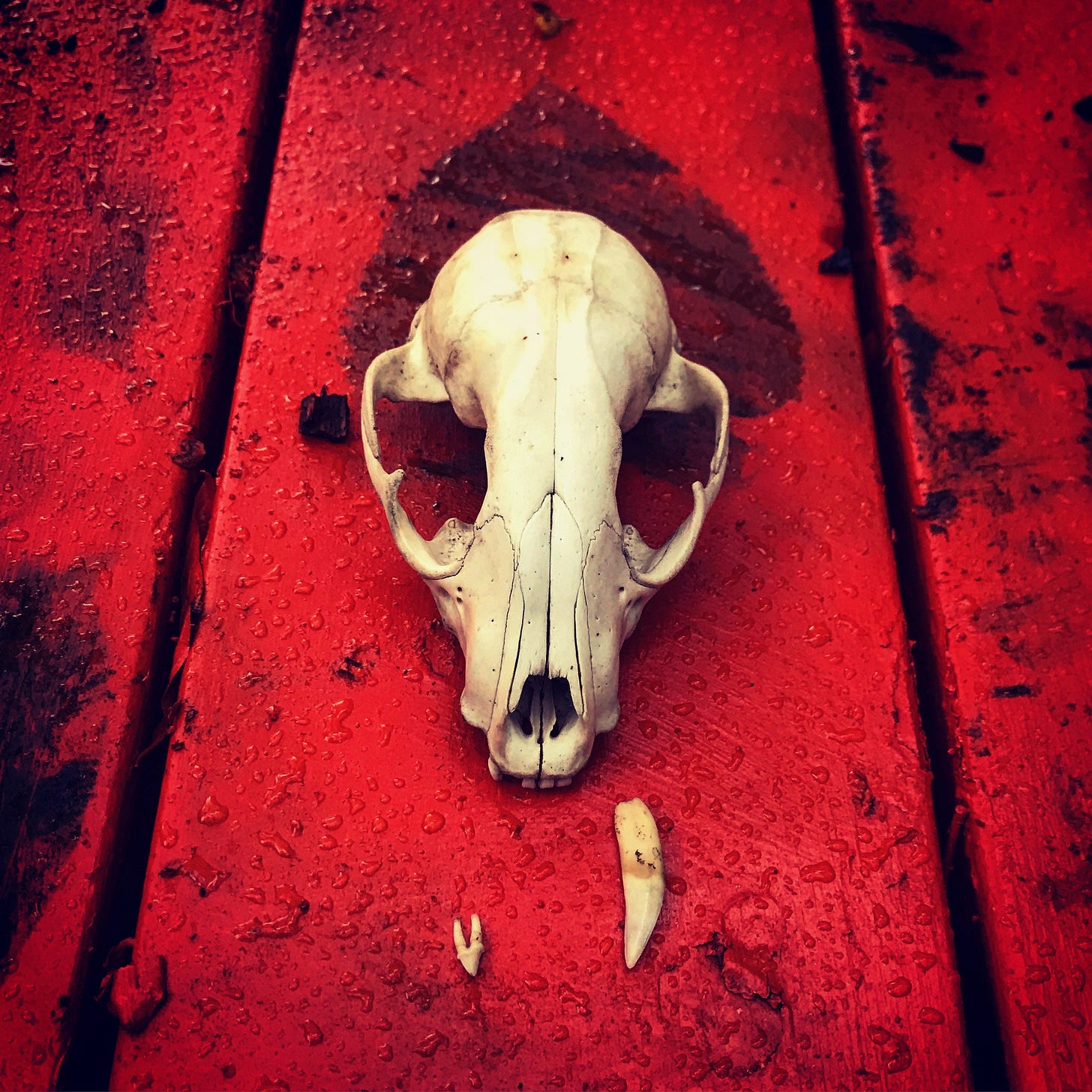

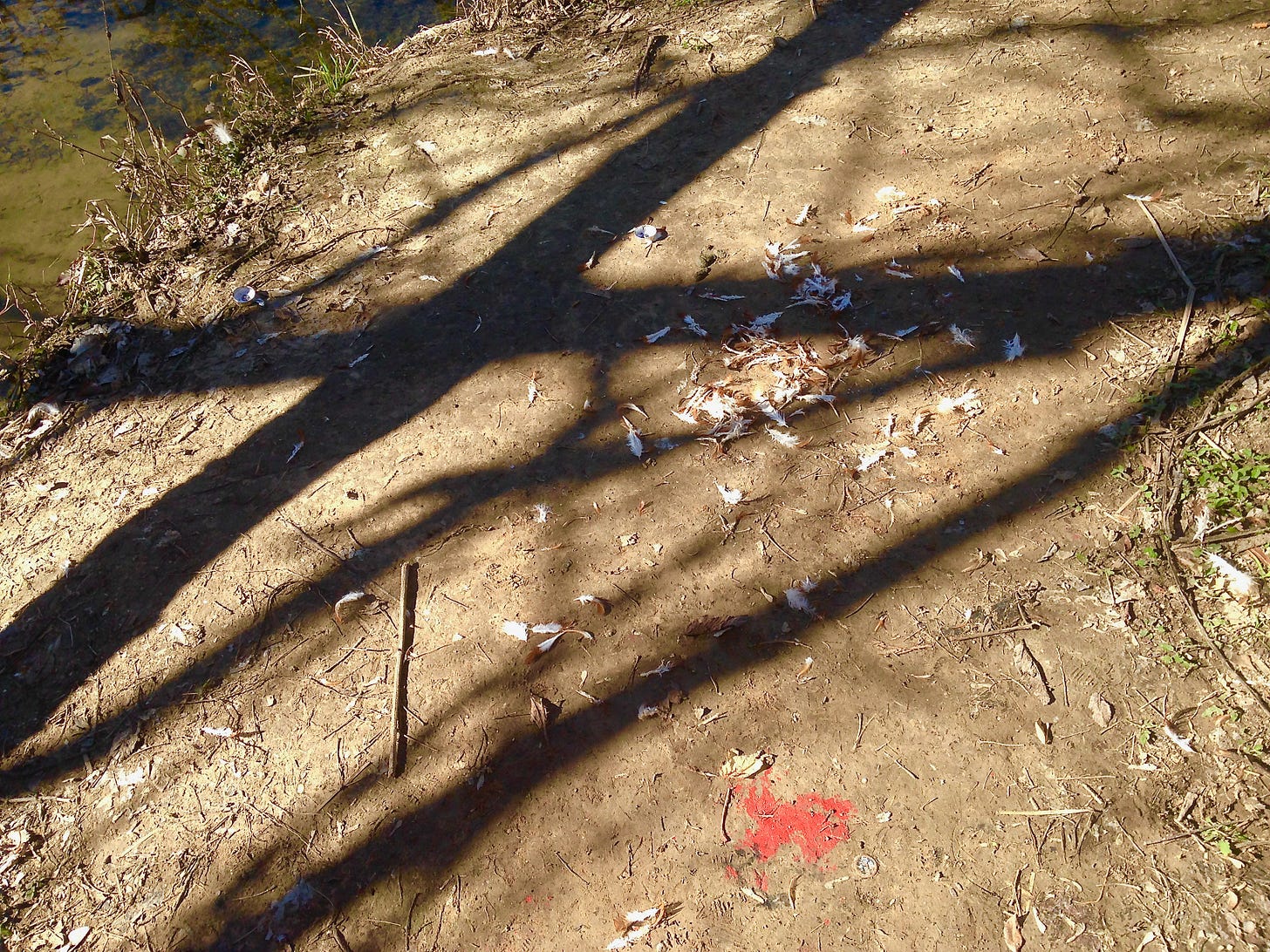



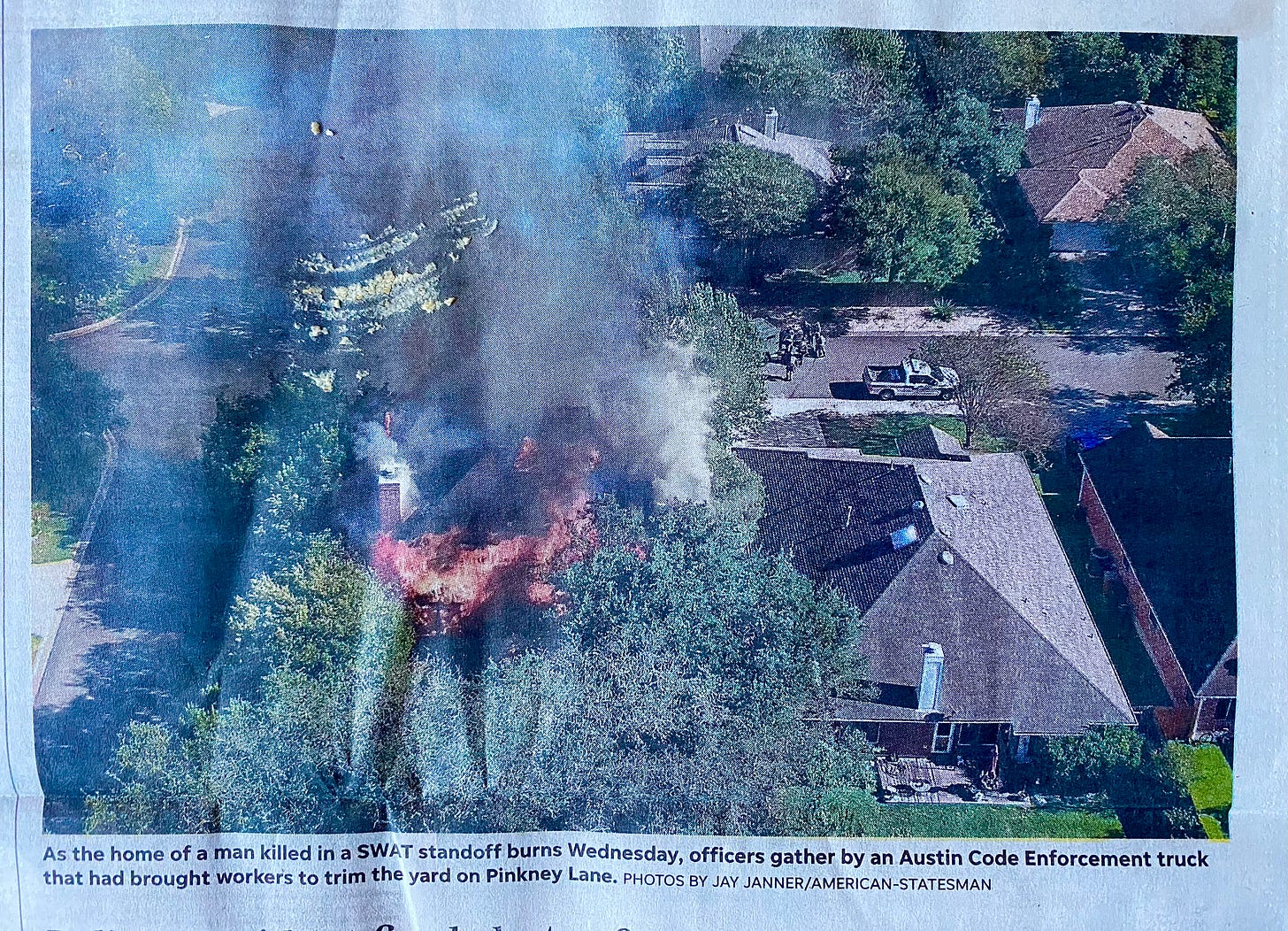

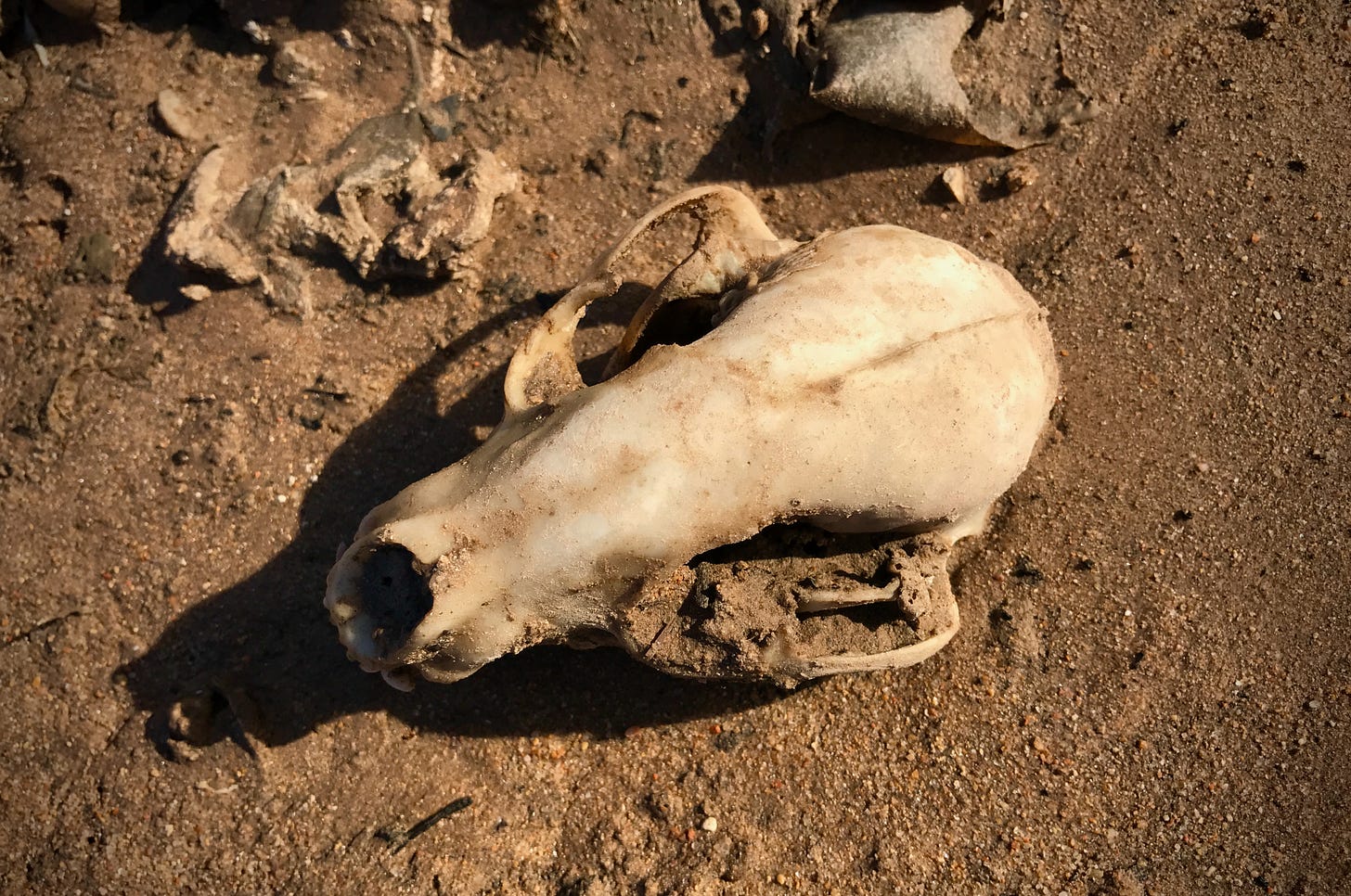
A wonderfully creepy read for this special day. I also like that you gave names to the places I find most intriguing in this world: "involuntary parks" or "negative space". We have them here in the burbs, too, and they are a welcome antidote to the maddening tidiness that is imposed on nature here.
Another wonderful read, but I especially liked the photo of our dear Alex in his mask that he loved. WB